- Author Miguel Ramacey [email protected].
- Public 2023-12-17 06:11.
- Last modified 2025-01-24 21:21.
Since ancient times, Crimea has been home to various peoples. Until now, a large number of religious buildings have been preserved here, including the unique shrines of Orthodoxy. Addresses of temples in Simferopol are known to many pilgrims and connoisseurs of architectural and religious historical monuments.
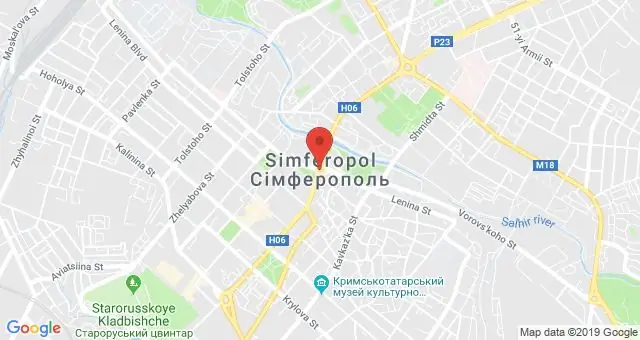
Peter and Paul Cathedral
The Church of Peter and Paul in Simferopol was built in 1866 on the site of a dilapidated wooden church. Built at the expense of local residents. To this day, the temple is in its original form, because although it was closed in Soviet times, it was not subjected to great destruction.
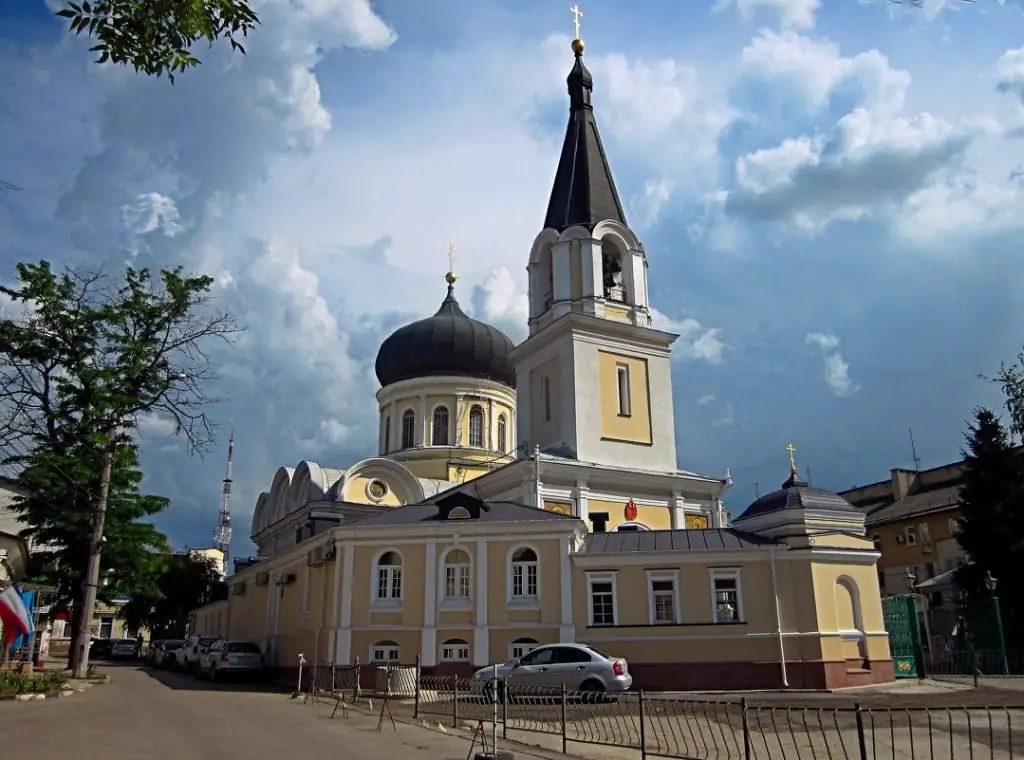
The temple is made in a mixed architectural style. The techniques of ancient Russian architecture are harmoniously intertwined here with classical elements. The high windows are framed with white stone architraves. The upper part of the walls is decorated with a stepped cornice. There are 12 window openings on the high drum. The temple is crowned with a black onion dome.
A porch is located at the entrance. An elegant bell tower rises above the stone staircase. Entrancebordered by semi-columns, and on the facades you can see a mosaic depicting Christ and Saints Peter and Paul.
In 2003, the temple acquired the status of a cathedral. Now it is a functioning temple, which is a cult landmark of the Crimea.
Address in Simferopol: st. Proletarskaya, house 5.
Holy Trinity Cathedral
Another oldest temple in Simferopol. Initially, a Greek church and a gymnasium were located here. In 1868, the old buildings were dismantled, and a stone church was built on this site, consecrated in the name of the Holy Trinity.

Another name for the church is the Church of St. Luke. In Simferopol, this is perhaps the most famous religious building. Here lie the relics of Archbishop Luke, who served in the church and, after his death, was canonized as a holy new martyr and confessor. There is also the main shrine - the icon of the Mother of God "Grieving".
The building of the cathedral was built in the classical style by I. Kolodin and is a cruciform structure with a high octagonal light drum and a small bell tower near the entrance.
The facade is decorated with mosaic patterns and stucco ornaments. Blue domes complete openwork crosses. No less magnificent is the interior of the temple.
Under the Soviet regime, the cathedral was closed, but for a short time. Due to the fact that most of the parishioners were Greek citizens, the communists had to show respect for the faith of the citizens of another country and open the temple for worship.
In 2003, the temple of Luke in Simferopol wasincorporated into the Women's Holy Trinity Monastery, and the status of the cathedral was transferred to the Peter and Paul Church.
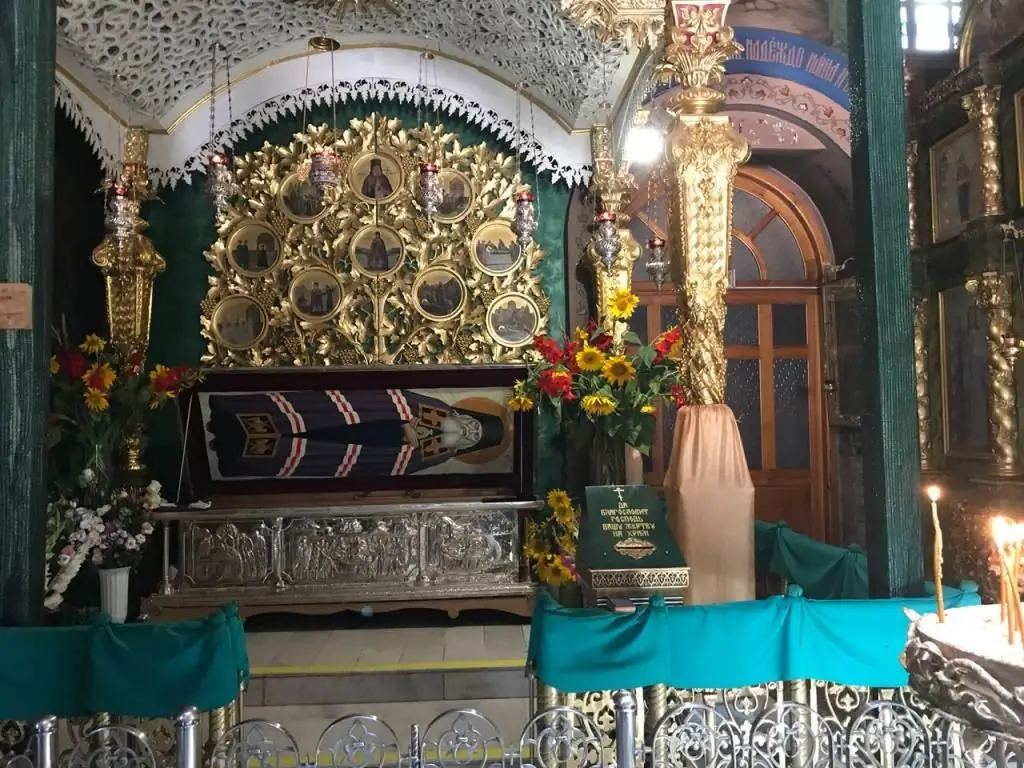
The monastery also includes a baptismal church, a chapel and a museum of St. Luke. Also to the left of the temple there is a refectory, workshops and sister cells.
Temple address: st. Odessa, house 12.
Church of Constantine and Helena
This small church was built in 1785, the year after the founding of Simferopol. The temple is the very first Orthodox building in the city. In 1787, Catherine II visited it, which is why the people called the church Catherine's.
In 1785, the commander of the Russian regiment B. Tishchev bought a Tatar hut in Simferopol for 50 rubles, the owner of which was going to emigrate to Turkey. There he set up a regimental church, consecrated in the name of Equal-to-the-Apostles Constantine and Helena.
After the military garrison left the city, the temple was empty for some time. Then he became the property of Major General V. Popov and received the status of a house church. At the initiative of the new owner, the architectural appearance of the shrine was changed.
In 1924 the communists closed the church. The flying club was located in its premises. Temple property was transferred to the Holy Trinity Cathedral, and the building was rebuilt. From the original appearance, only the shape of the building and some decorative elements remained.
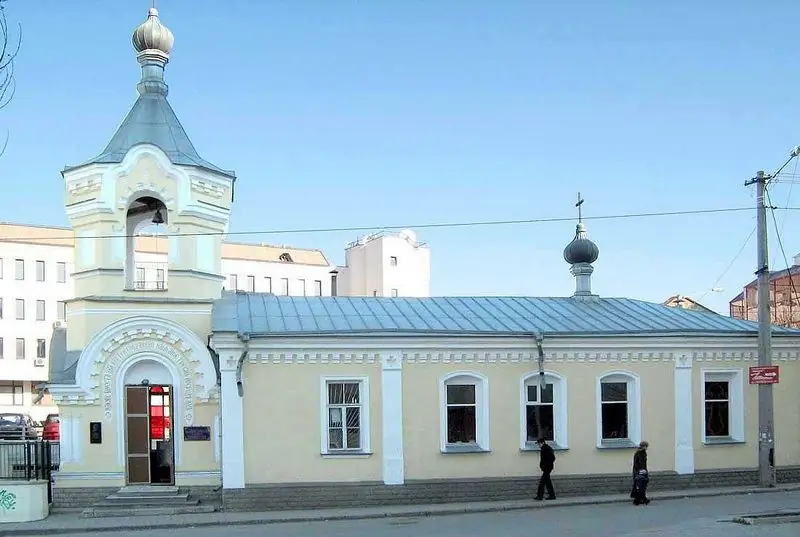
The Church of Constantine and Helena was returned to the Crimean diocese in 1991. The first worship service was held there in 2001, afterdecade recovery.
Currently, this is a small functioning temple, combining elements of Vladimir-Suzdal architecture and Russian baroque. Based on old drawings and photographs, the wall paintings, arched openings, stucco molding and onion domes were restored as accurately as possible.
Church address: st. Petropavlovskaya, house 8a.
Church of All Saints
Another one of the oldest and most important temples in Simferopol. It was built in 1864 at the expense of the merchant V. Maslennikov on the territory of the city cemetery. For a long time it was the main burial place for Orthodox residents.
Initially consecrated in the name of the Assumption of St. Anna. It is the only religious building in Simferopol, which has never been closed and continued to perform services after the revolution and during the war. The church was not destroyed and rebuilt, so it has been preserved in its original form.
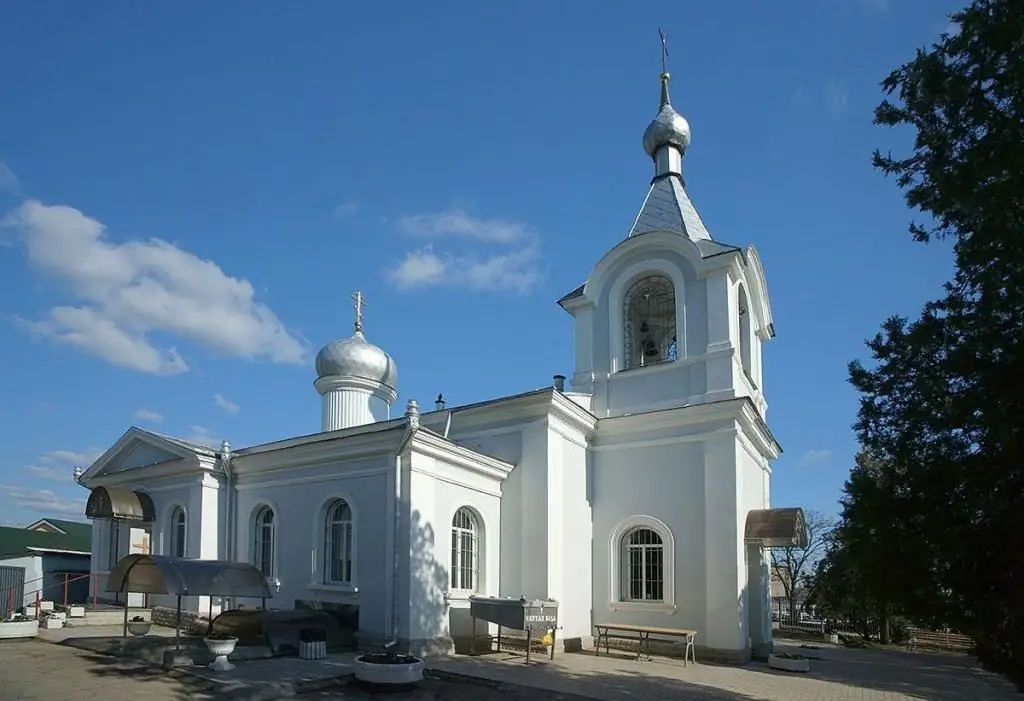
The temple is a rectangular, elongated building in a classical style. It differs from other city churches in simplicity and rigor. The hipped bell tower is the only decoration of the shrine.
Now the churchyard is closed for burials, but the Church of All Saints (Simferopol) is active, and the tradition of holding funeral services here has been preserved to this day.
A unique relic is stored here: the image of Christ the Savior imprinted in the form of a negative on glass, which was recognized by a special commission as miraculous. After the solemn liturgies, it is carefully taken out to the parishioners for viewing.
Address: Educational lane, house 5.
Alexander Nevsky Cathedral
The decree on the construction of this temple was given by Catherine herself in 1789. But due to various circumstances, its construction was completed only in 1829. Until 1917, the building was repeatedly rebuilt and expanded.
In the days of the October Revolution, the headquarters of the Bolsheviks was located here. In 1930, with a large crowd of people, the cathedral was blown up by the communists and completely destroyed. A park was laid out on this site, and in 1944 a tank-shaped monument dedicated to the liberators of Simferopol was erected.

Since 2003, work has been underway to restore the cathedral, which has not yet been completed. The appearance of the modern religious building is significantly different from the original. Due to the great Orthodox significance of the Alexander Nevsky Church in the history of Simferopol, it is simply impossible not to mention it among the shrines of the city.
Address: st. Alexander Nevsky, 6.
Church of the Three Saints
Built in 1903 at the Theological Seminary. It is a basilica similar to the ancient Christian churches. A five-domed rectangular temple standing on a high plinth. Four small domes are set at the corners on small turrets. The main dome with a cross is made in the form of a tent.
The painting of the temple was made by the artist D. Pravednikov. The oak iconostasis was made by craftsmen from St. Petersburg. The entire interior was destroyed when the church was closed by the Bolsheviks in 1924.
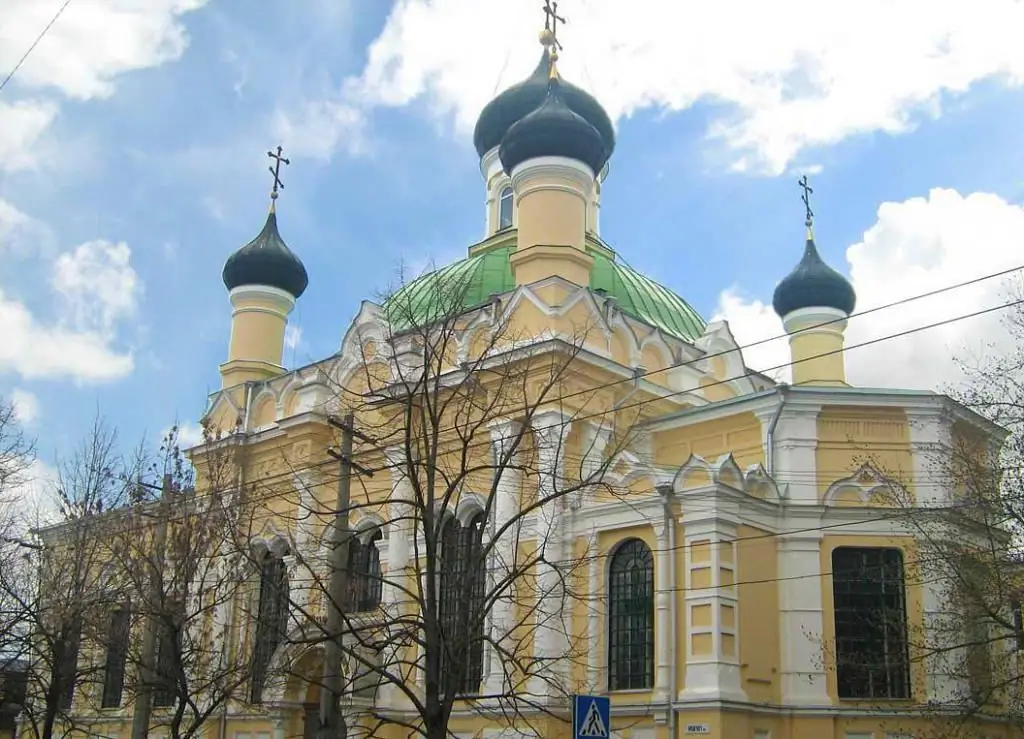
Services in the church were resumed after its restoration in 1903. Now this is a functioning religious building, and its doors are open daily for everyone.
Temple address: st. Gogol, house 16.






